How Do Air Purifiers Remove Mold Spores?
5/10/2021 (Permalink)
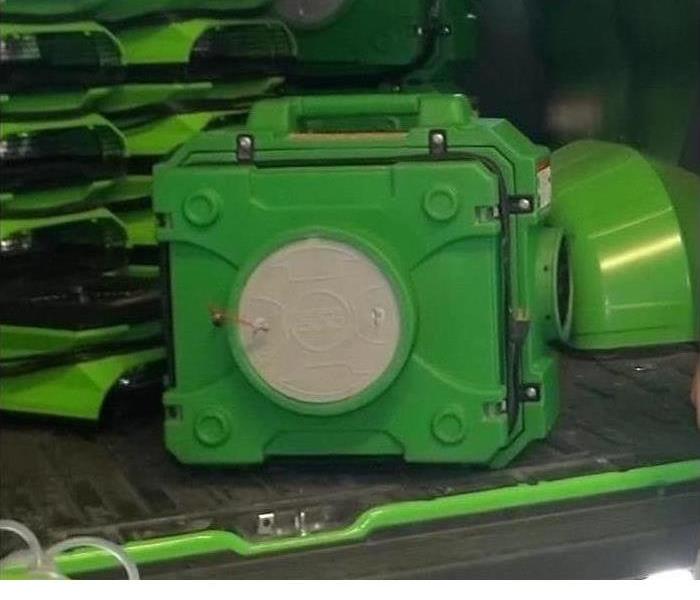 SERVPRO has a variety of tools and equipment like this air scrubber to remove mold damage from your home.
SERVPRO has a variety of tools and equipment like this air scrubber to remove mold damage from your home.
A variety of air filtration systems can reduce the presence of mold spores in interior air. Though purification systems work in different ways, they each have features that are helpful for preventing mold growth at a residence.
Filter Type
Fungus spores range in size from as small as 3 microns to as large as 100 microns. High-Efficiency Particulate Air (HEPA) filters are the most effective, and have several requirements:
- Remove 99.97 percent of airborne particles
- Filter particles down to 0.3 microns
- Labeled "True HEPA" and not "HEPA Type"
As most spores are larger than 2 microns, you may be able to save money by purchasing a HEPA Type filter. These filtration units will not eliminate smaller contaminants.
Room Size
When choosing a purification system, it is also important to factor in the square footage of the space in which you want to filter air. Here are a few guidelines for selecting an air filtration system:
- Small room purifiers filter air in spaces up to about 300 square feet
- Medium-to-large room purifiers filter air in spaces ranging from about 300 to 600 square feet
- Large to extra-large room purifiers filter air in spaces up to or over 1,000 square feet
It may be necessary to purchase more than one purifier to use throughout a home. You may also periodically relocate a unit for more thorough filtration results.
Operation and Maintenance
Check to see whether the purifier you are considering contains additional systems. Some units feature antimicrobial treatments or methods for breaking down particles. You should also determine whether a filter can be cleaned and reused or will need to be replaced.
All of these factors impact the ability of an air purifier to filter mold spores. The right air filtration system can improve air quality and limit mold growth. If mold is already a problem at a residence, call SERVPRO of Eaton County, Clinton and Gratiot Counties, Lansing & Holt today at (517)541-1170
How We Handle Mold
3/9/2021 (Permalink)
 Mold should be taken seriously. SERVPRO wants you to call if you believe your home or business has been infested by this dangerous element.
Mold should be taken seriously. SERVPRO wants you to call if you believe your home or business has been infested by this dangerous element.
Mold remediation is a process in which we take very seriously. Here is a look at our step-by-step process that we take.
- It begins with initial contact from a customer requiring emergency services.
- An assessment of damage and inspection is required.
- Next, we take control of the mold so it doesn't spread.
- Then air scrubbers are used to further stop the spread.
- Removal of mold and infested materials is a priority.
- We clean any belongings affected by the mold.
- And lastly, we restore anything that has been damaged from the mold infestation.
Mold is not something you should just set aside and deal with later. If you think you have mold in your home or business call SERVPRO of Eaton County, Clinton & Gratiot Counties and Lansing & Holt at (517) 541-1170.
Over Insulation Can Cause Mold
3/4/2021 (Permalink)
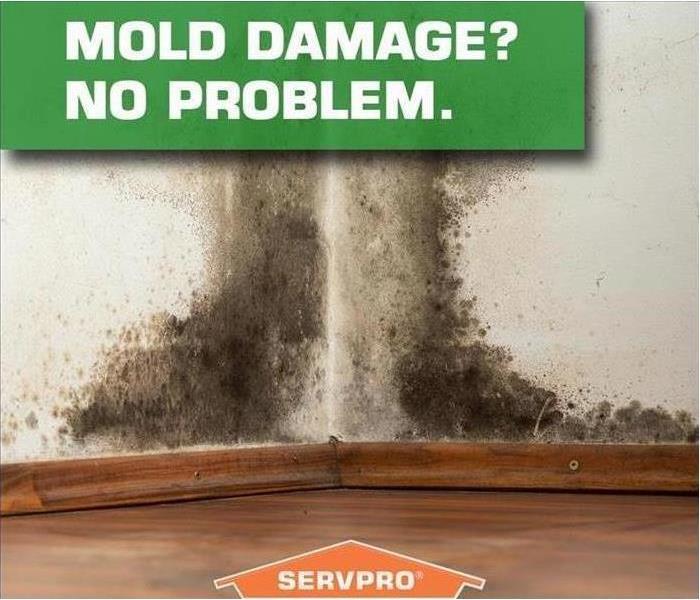 If you are experiencing a mold problem we can help.
If you are experiencing a mold problem we can help.
Insulation in your home is a huge necessity. But did you know you can go a little overboard with it? Over-insulating your home can cause some major issues. Not only insulation installment but also the location in which it is put can be a deciding factor in whether or not SERVPRO services will be in your future.
Excessive Insulation in a home will cause moisture to get trapped within the walls. Without any way for this moisture to escape it creates a great breeding ground for mold. If you believe you have mold in your home please call SERVPRO of Eaton County, Clinton & Gratiot Counties and Lansing & Holt and we can help you out.
Here is what the Mold Remediation Process looks like:
- Emergency Contact -(517) 541-1170
- Inspection and Mold Damage Assessment
- Mold Containment
- Air Filtration
- Removing Mold and Mold-Infested Materials
- Cleaning Contents and Belongings
- Restoration
So, You Want to Kill Mold?
1/7/2021 (Permalink)
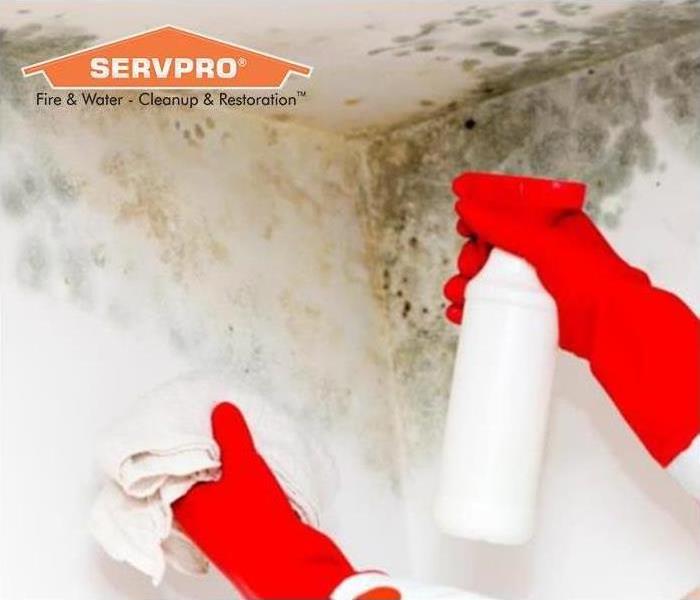 Let the trained professionals of SERVPRO of ECGLH tackle your newly discovered mold the right way
Let the trained professionals of SERVPRO of ECGLH tackle your newly discovered mold the right way
So, you want to kill mold? Don’t use bleach!
Usually, when most homeowners notice mold, they get out the bottle of bleach thinking a few sprays will solve the problem.
It’s no wonder.
Some of the most popular blogs continue to perpetuate the myth that spraying bleach will take care of your mold problem.
Even information on The Center For Disease Control (CDC) website still suggests using bleach to kill mold.
The truth is, using chlorine bleach to kill mold is probably one of the worst things you can do.
As a matter of fact, the Occupational Safety and Health Administration (OSHA), stopped recommending the use of bleach for dealing with mold problems. And, the Environmental Protection Agency (EPA) updated their guide as well, removing the suggestion to use bleach to kill mold.
The problem is, it’s true that bleach can kill some mold in some places some of the time. But, bleach only works to remove mold on hard, impermeable surfaces like bathtub and shower surrounds or tiles. However, on porous surfaces like drywall or hardwood floors, it won’t work to kill mold or keep it from coming back.
Why?
Because mold spreads its roots (called mycelia and hyphae) deep into porous surfaces.
Simply spraying a bleach solution on the surface won’t kill mold spores at their roots.
So, here are 9 Reasons Why you should NOT to Use Bleach to Kill Mold
- First, bleach encourages toxic mold growth on porous surfaces because it provides excess moisture.
Bleach contains about 90% water. When you apply bleach to a surface, the chlorine quickly evaporates leaving behind a lot of water. Then, when the water soaks into porous surfaces like wood, it encourages mold growth. So, bleach can make your mold problem worse.
- Bleach only removes the color from mold.
After you spray bleach, only the surface appears clean. But the problem is, the mold’s roots, or hyphae, continue to grow.
- The EPA and OSHA specifically advise against using bleach for mold remediation.
- Chlorine bleach is extremely harmful to surfaces.
For example, when you use bleach on wood, it starts to weaken it by breaking the fibers. When you spray bleach on metal, it starts to corrode it almost immediately. Thus, using bleach to kill mold creates problems with the structural integrity of a home.
- Bleach is extremely corrosive.
When you spray bleach and it evaporates, it releases chlorine gas. It irritates and eventually causes damage to the skin, lungs, and eyes.
- The corrosive nature of bleach is even worse when it’s mixed.
Bleach should never be mixed with acids, because it causes dangerous fumes.
Remember: Mixing cleaning compounds containing ammonia with bleach produces deadly gasses that can kill with just a few breaths.
- Bleach doesn’t work as a sanitizing agent when it’s mixed with organic material.
To be a successful sanitizer, bleach must be used on clean materials and surfaces. That’s why bleach products get used in the laundry after the wash cycle. Light and heat compromise the sanitizing properties of bleach. Even though the chlorine odor lingers for a while after you use it, bleach loses strength so quickly it doesn’t have a residual effect. That is, it doesn’t prevent future bacterial or fungal growth.
- Most bleach products are not registered with the EPA to be used as antimicrobial agents.
- And last, but not least, you don’t want to use bleach to kill mold because there are many antimicrobial alternatives readily available.
These antimicrobial agents are registered with the EPA specifically for killing mold. Some are formulated to be friendly to the environment, your family and your pets. In addition, they are cost effective, easy to use, and, they have a true residual effect. That means they prevent bacteria and mold from regrowing.
Finding mold in your home or commercial property can be scary. Call SERVPRO of Eaton County, Clinton and Gratiot Counties, Lansing & Holt for an inspection and clean-up quote
(517) 541-1170
How Do Air Purifiers Remove Mold Spores?
5/28/2020 (Permalink)
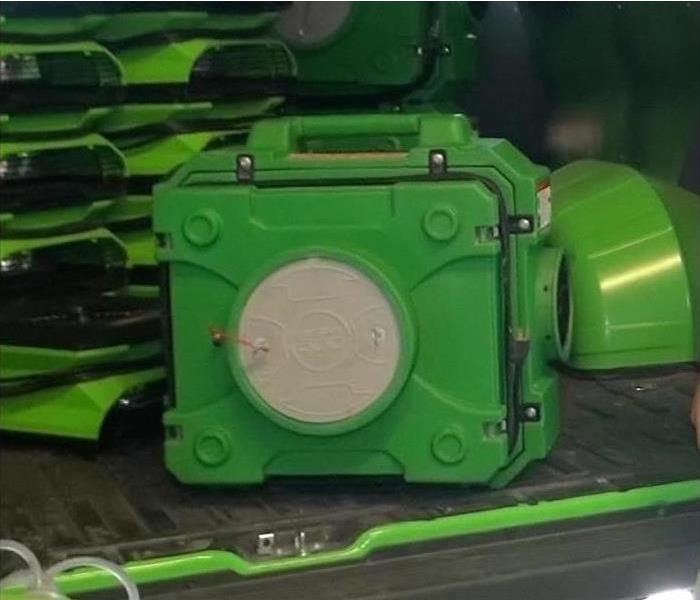 SERVPRO has a variety of tools and equipment like this air scrubber to remove mold damage from your home.
SERVPRO has a variety of tools and equipment like this air scrubber to remove mold damage from your home.
A variety of air filtration systems can reduce the presence of mold spores in interior air. Though purification systems work in different ways, they each have features that are helpful for preventing mold growth at a residence.
Filter Type
Fungus spores range in size from as small as 3 microns to as large as 100 microns. High-Efficiency Particulate Air (HEPA) filters are the most effective, and have several requirements:
- Remove 99.97 percent of airborne particles
- Filter particles down to 0.3 microns
- Labeled "True HEPA" and not "HEPA Type"
As most spores are larger than 2 microns, you may be able to save money by purchasing a HEPA Type filter. These filtration units will not eliminate smaller contaminants.
Room Size
When choosing a purification system, it is also important to factor in the square footage of the space in which you want to filter air. Here are a few guidelines for selecting an air filtration system:
- Small room purifiers filter air in spaces up to about 300 square feet
- Medium-to-large room purifiers filter air in spaces ranging from about 300 to 600 square feet
- Large to extra-large room purifiers filter air in spaces up to or over 1,000 square feet
It may be necessary to purchase more than one purifier to use throughout a home. You may also periodically relocate a unit for more thorough filtration results.
Operation and Maintenance
Check to see whether the purifier you are considering contains additional systems. Some units feature antimicrobial treatments or methods for breaking down particles. You should also determine whether a filter can be cleaned and reused or will need to be replaced.
All of these factors impact the ability of an air purifier to filter mold spores. The right air filtration system can improve air quality and limit mold growth. If mold is already a problem at a residence, call SERVPRO of Eaton County, Clinton and Gratiot Counties, Lansing & Holt today at (517)541-1170
Eaton, Clinton, Gratiot County, Lansing & Holt Residents: Follow These Mold Safety Tips if You Suspect Mold
3/31/2020 (Permalink)
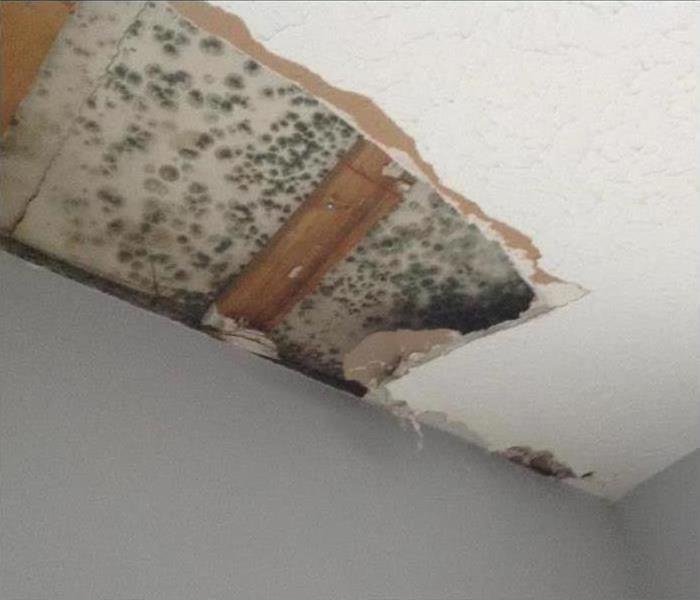 Be careful! Without proper training, you could be spreading mold throughout your home.
Be careful! Without proper training, you could be spreading mold throughout your home.
If you see visible mold, do not disturb it. You can inadvertently spread the mold infestation throughout your home. When mold is disturbed, the mold can release microscopic mold spores which become airborne and can circulate inside your home.
What to Do:
- Stay out of affected areas.
- Turn off the HVAC system and fans.
- Contact SERVPRO of Eaton County for mold remediation services.
What Not to Do:
- Don’t touch or disturb the mold.
- Don’t blow air across any surfaces with visible or suspected mold growth.
- Don’t attempt to dry the area yourself.
- Don’t spray bleach or other disinfectants on the mold.
About Our Mold Remediation Services
SERVPRO of Eaton County, Clinton and Gratiot Counties, Lansing & Holt specializes in mold cleanup and restoration, in fact, it’s a cornerstone of our business. Our crews are highly trained restoration professionals that use specialized equipment and techniques to properly remediate your mold problem quickly and safely.
If You See Signs of Mold, Call SERVPRO of Eaton County, Clinton and Gratiot Counties, Lansing & Holt Today 517-541-1170
GOT MOLD?
3/18/2020 (Permalink)
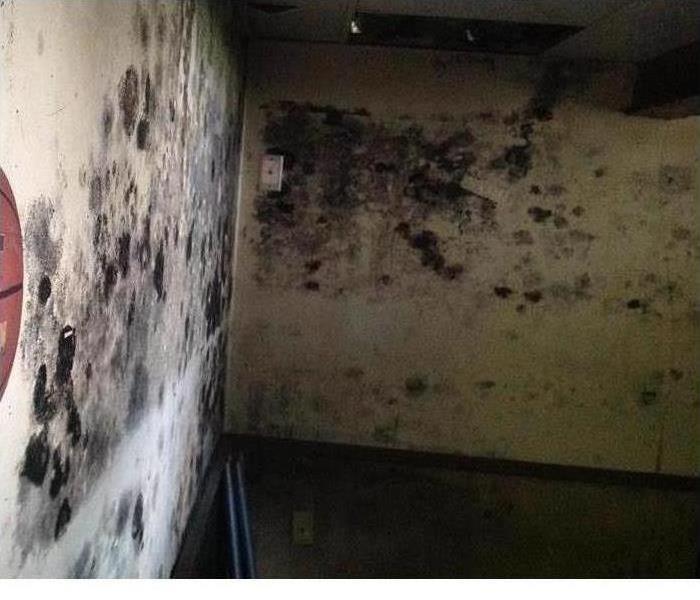 This mold was found in a foreclosed home
This mold was found in a foreclosed home
Microscopic mold spores naturally occur almost everywhere, both outdoors and indoors. This makes it impossible to remove all mold from a home or business. Therefore, mold remediation reduces the mold spore count back to its natural or baseline level. Some restoration businesses advertise “mold removal” and even guarantee to remove all mold, which is a fallacy. Consider the following mold facts:
- Mold is present almost everywhere, indoors and outdoors.
- Mold spores are microscopic and float along in the air and may enter your home through windows, doors, or AC/heating systems or even hitch a ride indoors on your clothing or a pet.
- Mold spores thrive on moisture. Mold spores can quickly grow into colonies when exposed to water. These colonies may produce allergens and irritants.
- Before mold remediation can begin, any sources of water or moisture must be addressed. Otherwise, the mold may return.
- Mold often produces a strong, musty odor and can lead you to possible mold problem areas.
- Even higher-than-normal indoor humidity can support mold growth. Keep indoor humidity below 45 percent.
If your home or business has a mold problem, we can inspect and assess your property and use our specialized training, equipment, and expertise to remediate your mold infestation.
 SERVPRO has a variety of tools and equipment like this air scrubber to remove mold damage from your home.
SERVPRO has a variety of tools and equipment like this air scrubber to remove mold damage from your home.


 24/7 Emergency Service
24/7 Emergency Service





